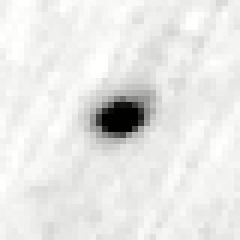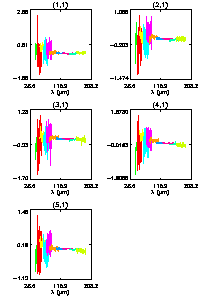ISO LWS Data for N300C_6
(1) Object: "N300C_6 "
(2) TDT: 54902156
(3) Observing Mode: L01
(4) OLP Version: 7.0
(5) Observer_id: "KISHII "
(6) Proposal_id: "NGC300 "
Raster Positions; Epoch (J2000)
(1,1)
RA: 00h54m23.7s
Dec: -37d41m31s
(2,1)
RA: 00h54m30.0s
Dec: -37d41m59s
(3,1)
RA: 00h54m36.3s
Dec: -37d42m28s
(4,1)
RA: 00h54m42.6s
Dec: -37d42m57s
(5,1)
RA: 00h54m48.9s
Dec: -37d43m26s
75" LWS Pointing Overlays on DSS and Link to 1x1 degree IRAS Images


This observation has been reduced by the following steps:
- Estimate and remove dark current using LWS Interactive Analysis (LIA).
- Derive the Absolute Responsivity Correction (ARC) factors using LIA. The ARCs are derived from internal calibration flashes and scale the detector responsivities to the values measured during the LWS calibration.
- Remove outlying points by hand using ISAP. These points are typically caused by cosmic ray hits.
- Average the data across scans using a 3-sigma "special clip" algorithm found in ISAP and designed for LWS data.
- Defringe data with ISAP LWS01 defringe module.
- Write out to FITS and ASCII files.
Calibration Notes:
- The continuum flux may not be well determined, especially for weak sources. See the LWS Handbook and calibration notes for more information.
- For extended sources, NO EXTENDED SOURCE CORRECTION has been applied. See the LWS Handbook and calibration notes for more information.
Reduced Spectra and Data:

Reduced data FITS file (Shift-click)
Reduced data ASCII file

